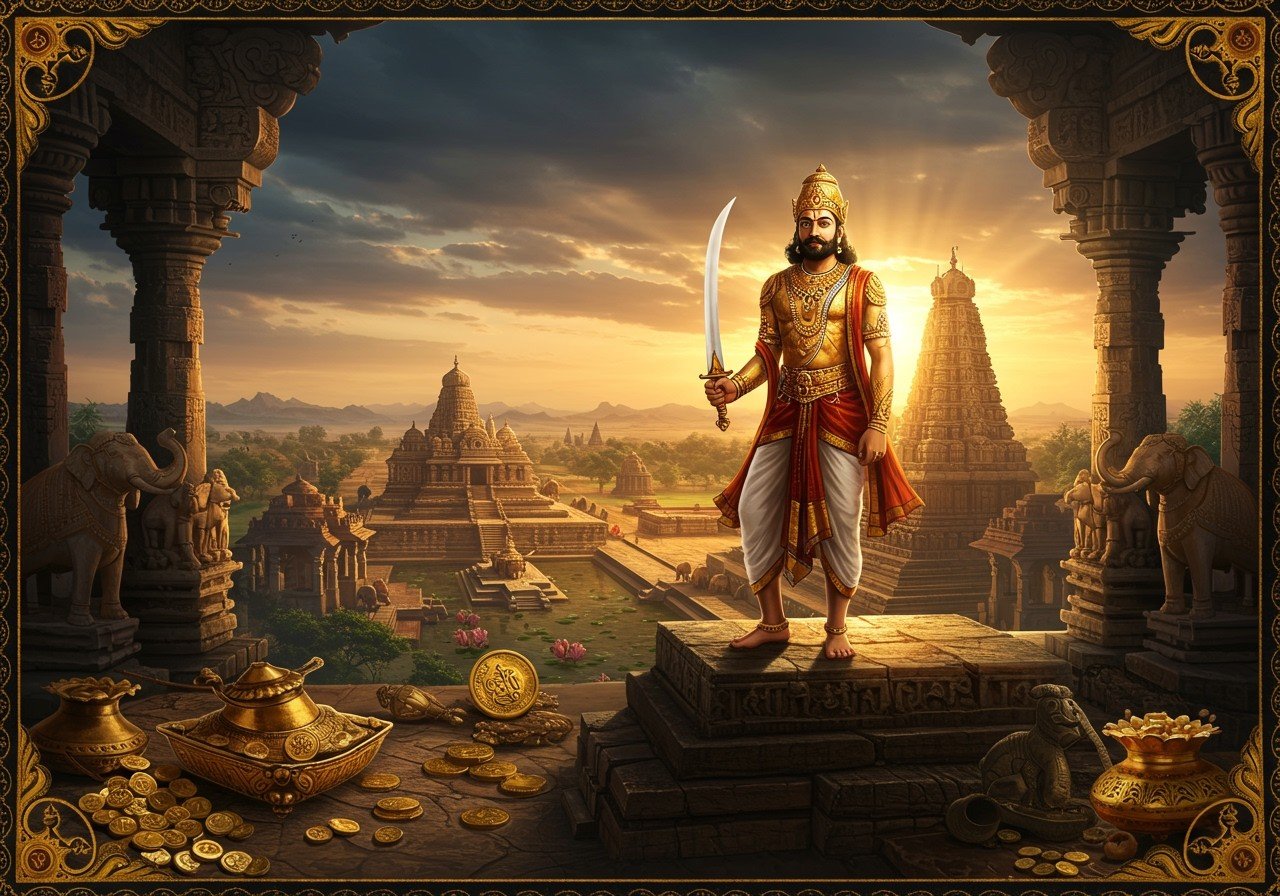The Western Ganga Dynasty: A Comprehensive Guide for UPSC Aspirants

The Western Ganga Dynasty, a prominent power in ancient South India, reigned from approximately 350 to 1000 CE. Their rule, centered in the Mysore region (Gangavadi), significantly influenced the development of Karnataka and had a ripple effect across neighboring regions like Odisha, Tamil Nadu, Kerala, and Andhra Pradesh. This comprehensive guide delves into the key aspects of their reign, crucial for UPSC exam preparation.
Historical Overview (350-1000 CE)
Emerging around 350 CE, the Western Gangas established a powerful kingdom that lasted for centuries. Distinguished from the later Eastern Gangas of Kalinga (1028-1434 CE), the Western Gangas left an indelible mark on the political and cultural landscape of South India. Their reign ultimately concluded around 1000 CE following a defeat by the Chola Dynasty.
- Key Rulers: The dynasty boasted influential rulers like Kirtivarman I, Durvinita, and Bhattaraka. These kings played pivotal roles in expanding the kingdom’s territories and consolidating its power through strategic alliances and military campaigns. They also fostered a vibrant cultural atmosphere, patronizing art, literature, and architecture.
- Interactions with Contemporary Powers: The Western Gangas frequently interacted with other powerful dynasties of the time, including the Pallavas, Chalukyas, and Rashtrakutas. These interactions involved both alliances and conflicts, shaping the political dynamics of the region and influencing the Ganga dynasty’s trajectory.
Cultural and Architectural Contributions
The Western Gangas were renowned patrons of the arts and sciences. Their reign witnessed significant advancements in architecture, literature, and education. They are particularly known for their intricate temple architecture, a testament to their sophisticated understanding of engineering and artistic expression.
Poojn.in, India’s leading online store for cultural goods and services, offers a wide array of products that can enrich your understanding of this era. Explore our collection of Lord Shiva Murtis, reminiscent of the deities worshipped during the Western Ganga period, to gain a deeper appreciation of their religious practices. For those interested in traditional rituals, our selection of camphor and other pooja items can provide a tangible connection to the past.
- Temple Architecture: The Western Gangas constructed magnificent temples showcasing intricate carvings and complex architectural designs. These temples served as centers of religious and cultural activity, reflecting the dynasty’s deep-rooted spiritual beliefs. Their architectural style blended influences from different traditions, creating a unique aesthetic that characterizes the period. For a deeper dive into temple architecture, explore our articles on Kandariya Mahadeva Temple and Sas-Bahu Temples.
- Literature and Education: The Western Ganga rulers actively promoted literature and education. They supported scholars and poets, leading to the creation of important literary works. The establishment of learning centers fostered intellectual growth and contributed to the flourishing of knowledge during their reign. Learn more about historical dynasties and their architectural marvels through our blog post on Badami Cave Temples.
Economic and Social Structure
The Western Ganga economy thrived on a mix of agriculture, trade, and a well-structured taxation system. Land grants played a vital role in the agrarian economy, shaping social hierarchies and power structures.
- Agrarian Economy: Agriculture formed the backbone of the Western Ganga economy. The fertile lands of their kingdom supported a thriving agricultural sector, contributing significantly to their prosperity. The system of land grants played a crucial role in distributing resources and maintaining social order.
- Social Hierarchy and Religious Influence: A structured caste system characterized the social hierarchy of the Western Ganga period. Both Jainism and Hinduism held significant influence, shaping social practices, customs, and beliefs. The interplay of these religious traditions contributed to the rich cultural tapestry of the kingdom.
Decline and Legacy
Despite their long and prosperous rule, the Western Ganga Dynasty eventually faced decline, culminating in their defeat by the Cholas around 1000 CE. However, their legacy endures through their remarkable contributions to art, architecture, and culture, which continue to inspire and intrigue historians and scholars today.
Further Exploration on Poojn.in
Deepen your understanding of the Western Ganga Dynasty and related topics by exploring these resources on Poojn.in:
- Khajuraho and Kandariya Mahadeva: A Cultural Heritage Journey
- Chandela Dynasty Architecture: The Kandariya Mahadeva Temple Legacy
- India’s Sas-Bahu Temples: A Complete Guide
- Bhoganandishwara Temple: History, Architecture, and Significance


